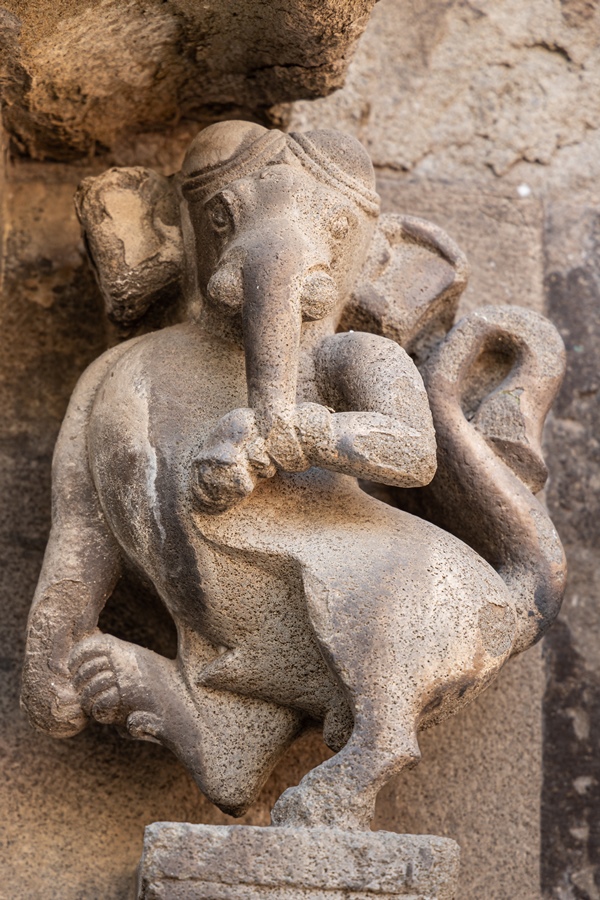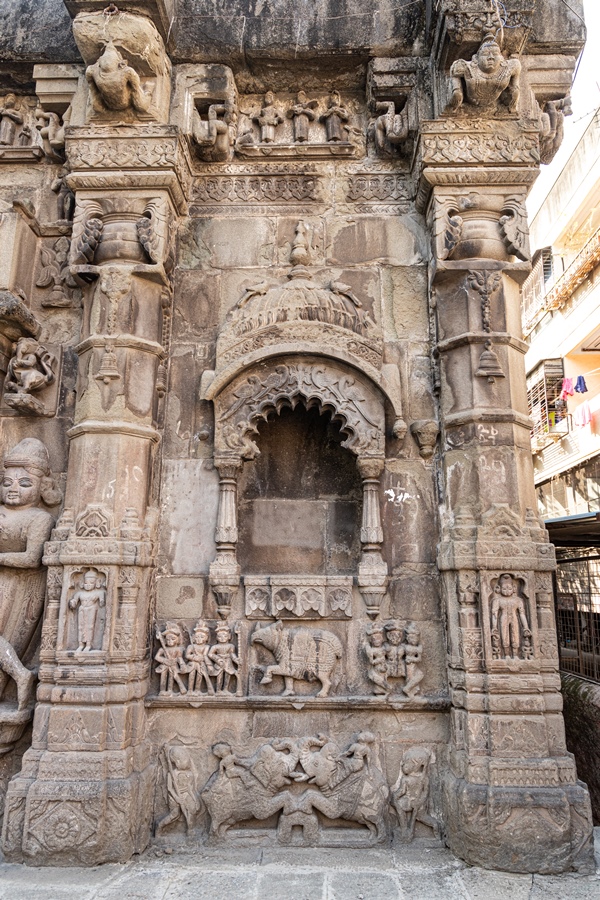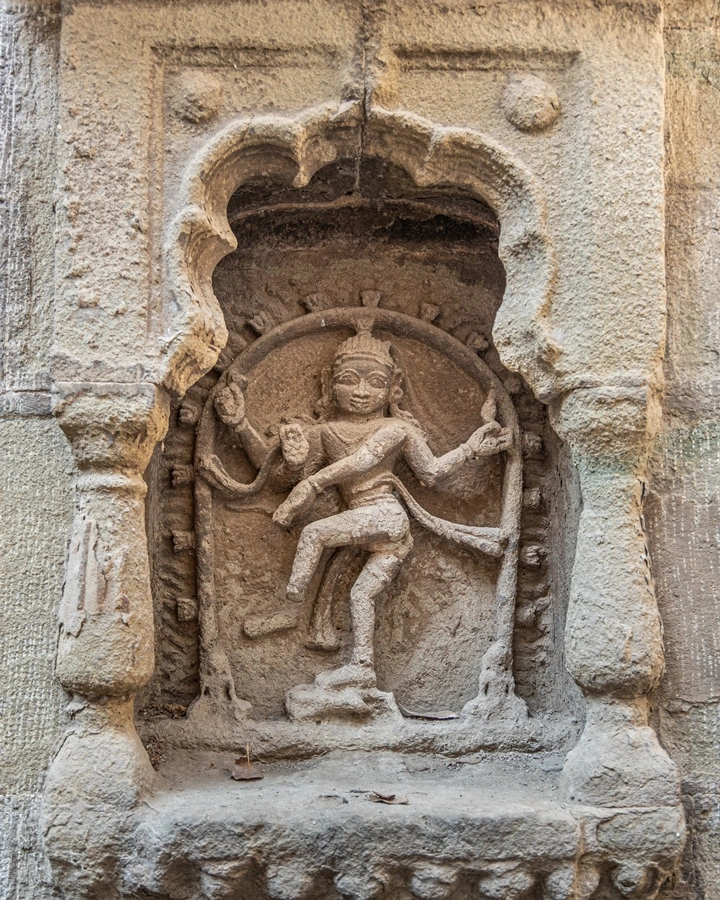TRISHUND GANAPATI TEMPLE
Trishundya Ganpati is a temple located in Somwar Peth , Pune . Among all the Ganesha temples in Pune, this is the best sculptured temple. This temple belongs to Giri Gosavi panta. Below the idol in the temple of these three trunks Ganesha is the tomb of the founder of the temple, Mahant Sri Dattaguru Goswami Maharaj. After anointing the idol, it pours water on the samadhi in the basement. Since this temple belongs to the Tantramargiyas of Girigosavi sect, common devotees did not visit here. Although the current main idol in the temple is of Trishund Gajanana, the original idea of building a Shiva temple must have been there.

This temple was built and completed by Bhimgirji Gosavi Mahantani on 26 August 1754. His descendants lived in the village of Ghampur in Indore. In the government records Till 1917 the temple had no owner. A branch of a tree in front of the temple fell on a nearby Nerlekar’s house, so he complained to the municipality; Then the municipality inquired. The owner of the temple was found to be a gentleman named Gosavi of Indore. He was called from Indore. They uprooted the tree. Later, the front part of the temple was turned on with wood; A coal warehouse was built in the assembly hall of the temple. Later he left this vakhar to a friend named Kulkarni and left for Indore. In 1945 Kailasgir Gosavi was named as the occupant. But, due to not being able to provide documentary evidence, their right to the temple was lost. In the year 1985, a trust was established for the maintenance of the temple.

While arranging the temple, it was planned that there should be a temple above and a basement below, a mausoleum and a school for the stubborn. All routine facilities were in the basement. There was an underground footpath to go near Nagzhari for the ritual. There was a large room in the wall of the well at the water level. There was a marble bathing square for the principal Guruvaras of the Tantrasadhas. The basement rooms have doors and niches in the walls of the rooms. The ceiling of the room has two notches in the stone and from those grooves the ceiling was hung upside down with the help of a rope and the smoke of certain plants was smoked on the burning coals. The temple has three parts namely sanctum sanctorum, darshan mandap and assembly mandap. The temple is on a square three and a half feet above the ground. The meeting hall and the original sanctum sanctorum are deep inside.

Behind the statue of Gajanana in the sanctum sanctorum is the niche. There is a three and a half feet tall recumbent idol of Sheshshayi Bhagavan, but it is not visible due to the darkness of the sanctum sanctorum and the Ganesha idol. The statue of Lord Ganesha has a square sitting position and the trishund Lord Ganesha is seated on a peacock. Out of the three trunks, the right trunk is touching the modakpatra in the lower hand. The middle trunk is rolling on the stomach and the left trunk is touching the chin of Shakti sitting on the left thigh.

The facade of the temple looks like a carved cave. Also every door inside is a unique piece of sculpture.Outside the main entrance there is a sculpture of British soldiers with guns chained to a rhinoceros. The symbol of Bengal and Assam – the rhinoceros – may have been shown in jail as a metaphor for the imperialist British beginning to swallow up Bengal. The temple has no peak. At the top is a turtle. Perhaps the original idea of installing a Shivlinga above was half-baked. The temple has shivlingas one on top of the other instead of a peak.
Thanks for reading.